A pleasant way of learning ones London… is to follow some consecutive guiding thread, such as the life of a particular person
Walks in London by Augustus J. C. Hare (1894)
When I sat down to map out a beer trip to London, I had no idea of the whirlwind I was about to find myself in. I don’t think it takes a lot of imagination to figure out that London has a great beer culture. While for most, London might immediately conjure up images of double-decker busses and Big Ben, for me it creates images of rows of ale pump handles sporting fanciful placards with names like Ghost Ship, Abbot Ale, Old Speckled Hen, and Spitfire. Early into my research, I discovered that London’s beer culture is weaved differently into its fabric than other great beer cities like Munich and Prague.
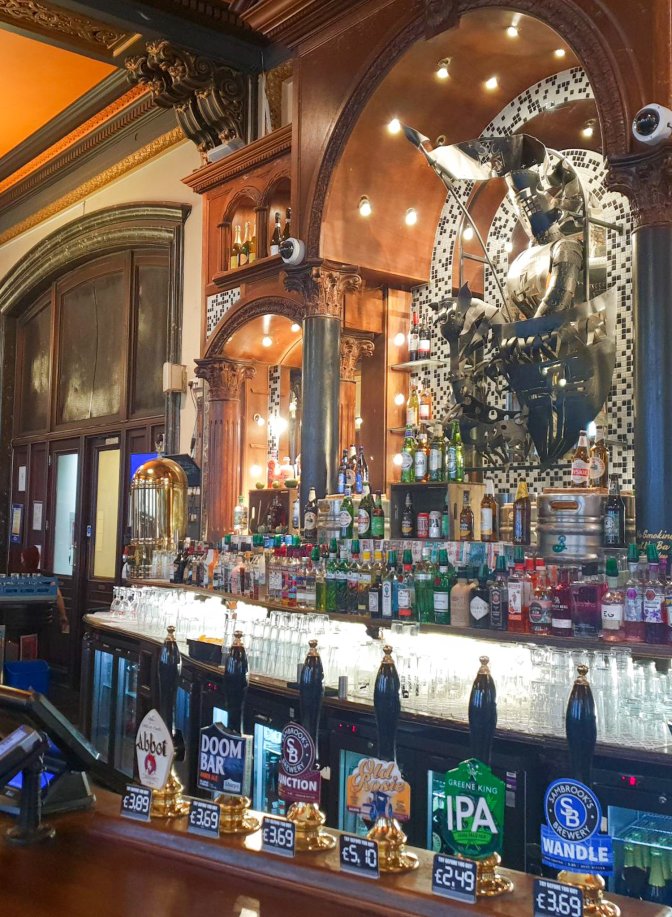
Prague is about its small traditional breweries located throughout the city. Munich is about its boisterous beerhalls each representing one of the big regional breweries. But what about London? As I was searching and pinning cool places to drink beer in London, my map was quickly exploding with markers. I was aware that the task was far more difficult than Prague or Munich. What was the difference? Something kept drawing my attention. Pin after pin.
The subject of the inn names, and the signs and noticeboards by which they are displayed to public view, is immensely wide and varied, and has its own fascination and attraction. In them are crystallized many of the facets of social life and history…
The Old Inns of England by A.E. Richardson (1934)
____
In medieval times came the display of many subjects connected with the Church, and such figures borrowed from heraldry as the Helmet and Crown, Unicorn, White Hart, Mermaid, and Red or Golden Lion…
____
Then there are portraits of kings and famous men, views of castles, ships, griffins and dragons, angels, saints and devils.
____
…a considerable number of subjects are identical, such as the Lion, Castle, Swan, Cock, Fox, Ship, Sun, Plough, Windmill, and Horseshoes in various numbers…
It was all of the pub names. Where London differs from Munich and Prague is that London is about the pub, alehouse, inn, tavern; all interchangable terms in the modern world. Take your pick. It is their charming names that conjure up cozy interiors, wooden beams, medieval or Victorian decor, scarred wooden tables, the scent of old wood finish, decorative curiosities and antiques, old photographs, faded artwork, and the aforementioned pump handles. But in London, these are everywhere. I needed a way to narrow down my search and I wasn’t interested to browse online for someone else’s Top 10 London Pub Lists. This needed to be organic. Surrendipitous. My idea.
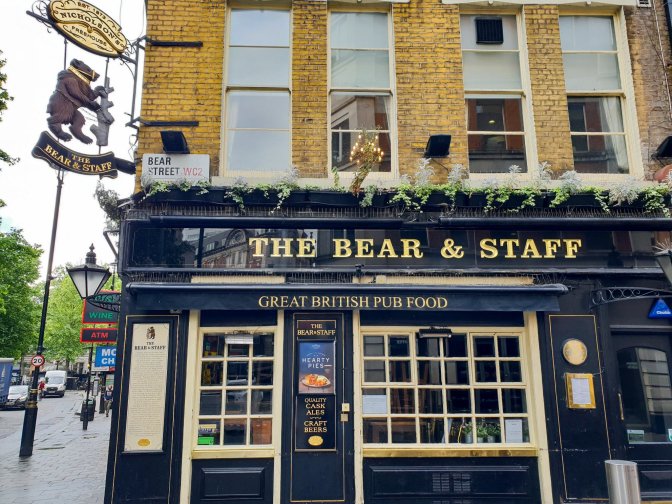
While London has an abundance of amazing buildings and sites, perhaps it is one of the rare cities of the world that may be just as famous or even more famous for the people who are associated with it than it is from its renowned landmarks. People, incidentally, both real and imagined. London has always resided in my travel soul as a sort of kaleidoscope. Everytime I revisit it in my mind, it never has quite the same face. It is a city of facets with layer upon layer of history. The kaleidoscope of London has a wide array of colorful historical and literary characters. Kings and Queens, Tudors, Plantagenets, Windsors, The Normans, Winston Churchill, Sherlock Holmes, Jack the Ripper, William Shakespeare, Knights Templar, Christopher Wren. In my previous visits, I mainly barged thru London checking off the highlights (multiple times in fact), jumping from facet to facet while all the sparkly pieces continued to shift and spin, never bringing me to any satisfying conclusion. By the time I sat down to plan my latest trip to London, I was already in the mindset to change my strategy. I didn’t just want to wander aimlessly thru history from pub to pub. What I needed was a theme.
To be honest, there was very little drama of a Shakespeare play or complex process of elimination like an Arthur Conan Doyle story. It felt obvious right from the start. So obvious, I couldn’t believe I hadn’t thought of it years ago. The first name that rose out of the fog hovering over the Victorian London alleyways of my mind was Charles Dickens. Growing up in the 70’s and 80’s, I was introduced to Charles Dickens the way most Americans were. Thru the various renditions of Dickens’ A Christmas Carol on television. Every year during the Christmas season, there was always the hope that I would turn on the TV and one of the versions would happen to be playing on one of the few channels that existed at the time. It didn’t matter if it was a classic film (nor which one), an animated version, a musical, or a made-for-TV movie. I would be transfixed by any of them. The intangible essence of Christmas, the way it looks and feels in the ether of my mind, came from these viewings. Over the years, the 1938 and 1951 films, became the traditional movies I watch every Christmas Eve. Christmas and Dickens are completely intertwined in my soul, a concept that I certainly don’t share alone. They even made a movie about it. However, I wonder if my generation will be the last where this deep sentimental connection between Dickens and Christmas can truly exist.
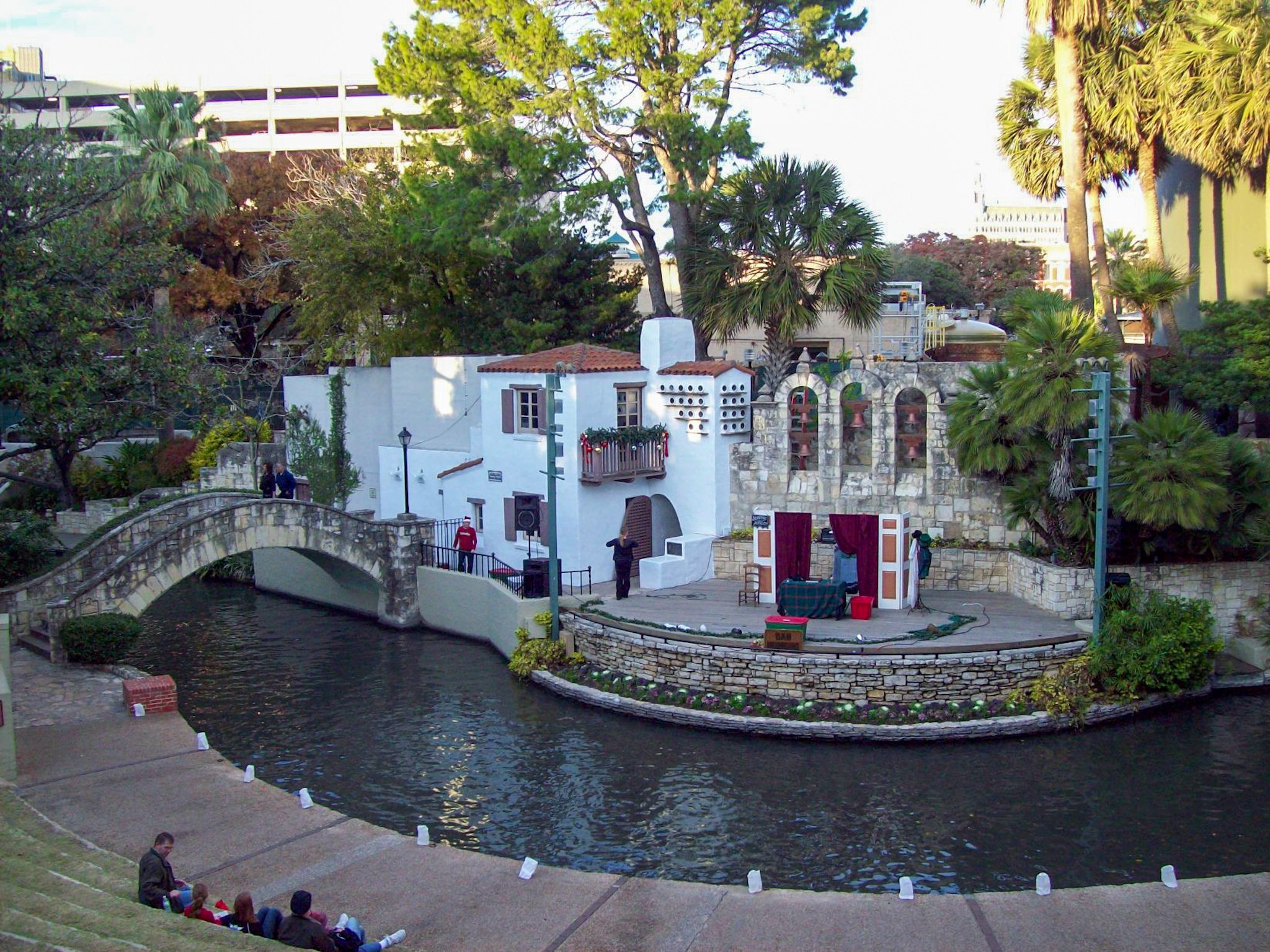
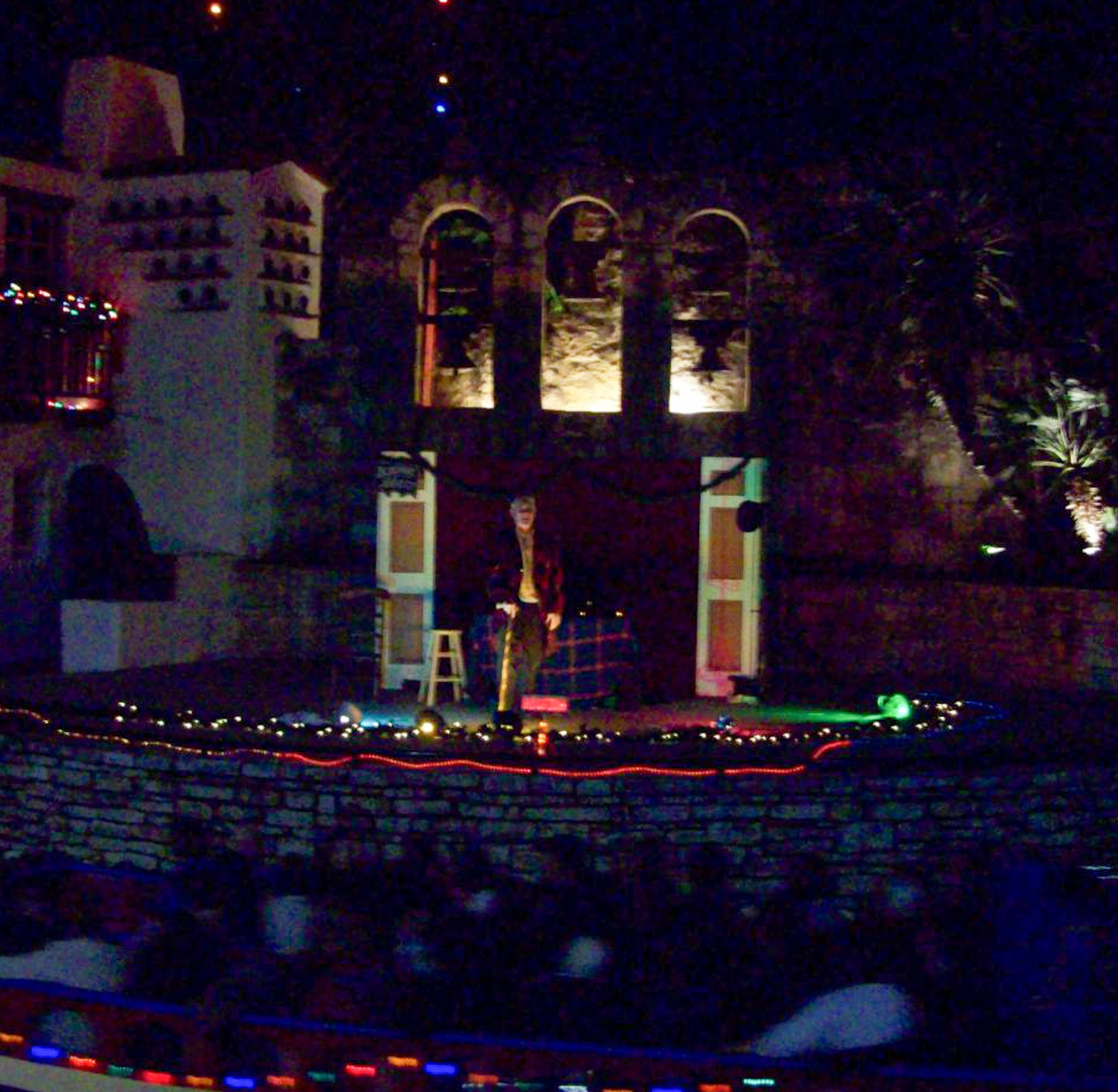
As a reader though, I have only ever managed to finish one of Dickens’ novels. Great Expectations. Twice. Once in high school and once on my own after university. For years, it has stood as the only novel of classic literature that I have ever read cover to cover. And technically, it probably still is. I finished James Joyce’s The Dubliners a few years ago during a trip to Ireland, but that is more of a group of short stories. Despite this, I knew the moment the idea popped into my head that Charles Dickens was essential to this trip.
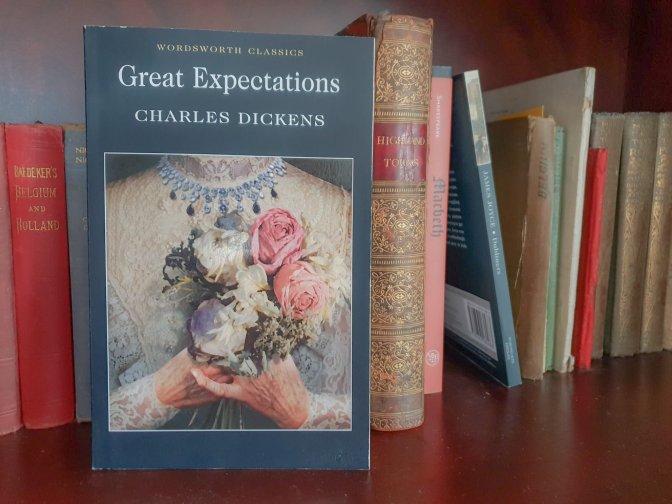
Thus began the search for sites with a link to Dickens, whether by name, association with the author, or association with his stories. This made it much easier to narrow down the list of pubs. After populating my map with waypoints, I decided to tackle them spontaneously, without a defined path or order. I simply wanted to step into Dickens’ London, take my time, soak it in, open myself to that sense of awe that only comes from traveling, and of course drink some beer along the way. Every day should be like that feeling Scrooge gets when he realizes he hasn’t missed Christmas.
What transpired was a journey full of unexpected surprises, the type that only happen when you don’t push your agenda, when you don’t follow a script. If there was a moment that I knew I was connected to this trip, it was the day after my arrival during my Cliffs of Dover hike. A random encounter with a book sale provided my main companion on this trip. It was a ca. 1911 copy of Bleak House. Although I would only eclipse about 75 pages over the next four days, it provided hints to places that were not on my original map. It also drew me further into Dickens’ world, bridging the gap between past and present. Those 75-pages would re-kindle my love for books, for reading, and lead me to the final stop on the trip where a chance discovery, like the appearance of a Jacob Marley ghost, showed me that my trip is a mere continuation of something that started 150 years ago after Dickens’ death. It would put a Scrooge-like nightcap on an adventure filled with copiously rewarding footsteps thru the world that was built in my mind starting from childhood.
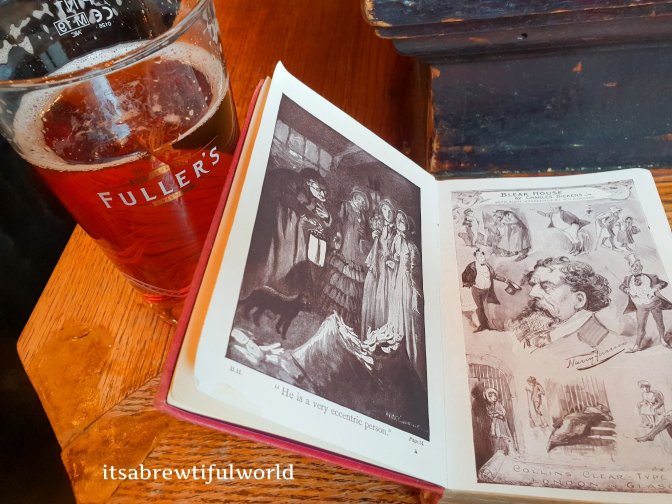
But what of Dickens and beer? In E.V. Lucas’ A Wanderer in London (1906), the author provided some insight on the drinking habits of Dickens and Londoners.
It is sad but true that the Londoner’s — indeed I might say the Englishman’s — first and last word in alcoholic cheer is whisky.
To the end Dickens brewed punch and saw that it was good; but with Dickens, or very shortly thereafter, passed away all interest in that enkindling Christianising bowl. They still mix it at the Cheshire Cheese…
Will there never come a mixer of hot and kindling beverages who, perhaps taking a Dickensian name, will wean the world from an undiscriminating devotion to whisky? Pineapple hot rum, with three lumps — nowhere now can one drink this fragrant concoction.
A Wanderer in London by E.V. Lucas (1906)
You can easily find recipes for Dickensian Punch on the internet. Punch and whisky aside, over the next several days I would discover that exploring the beer culture was anything but un-Dickensian, so over the next series of posts, I will share my Dickensian journey in the order that it happened with many cools places to drink a beer toast to the man who just might have invented Christmas.


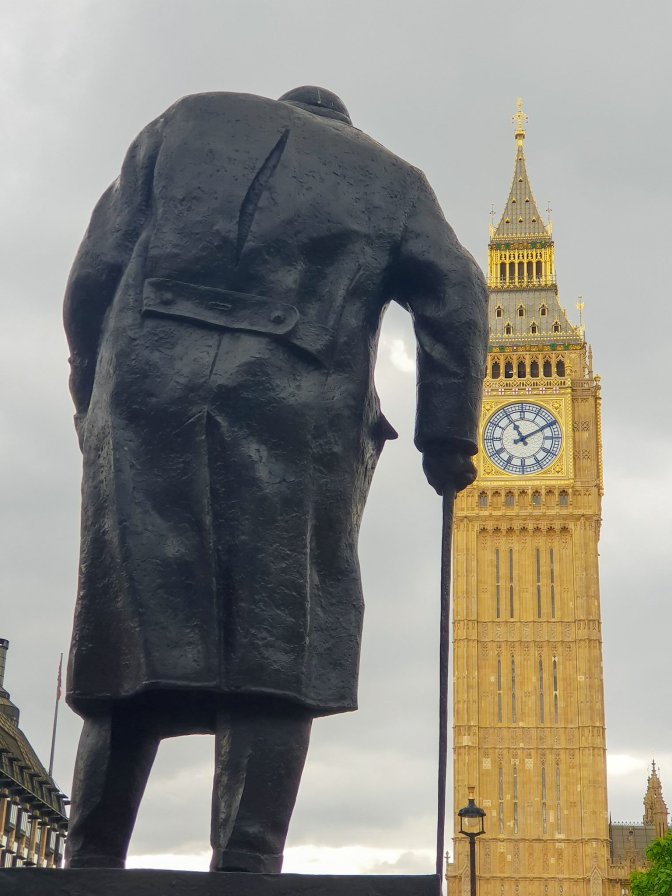
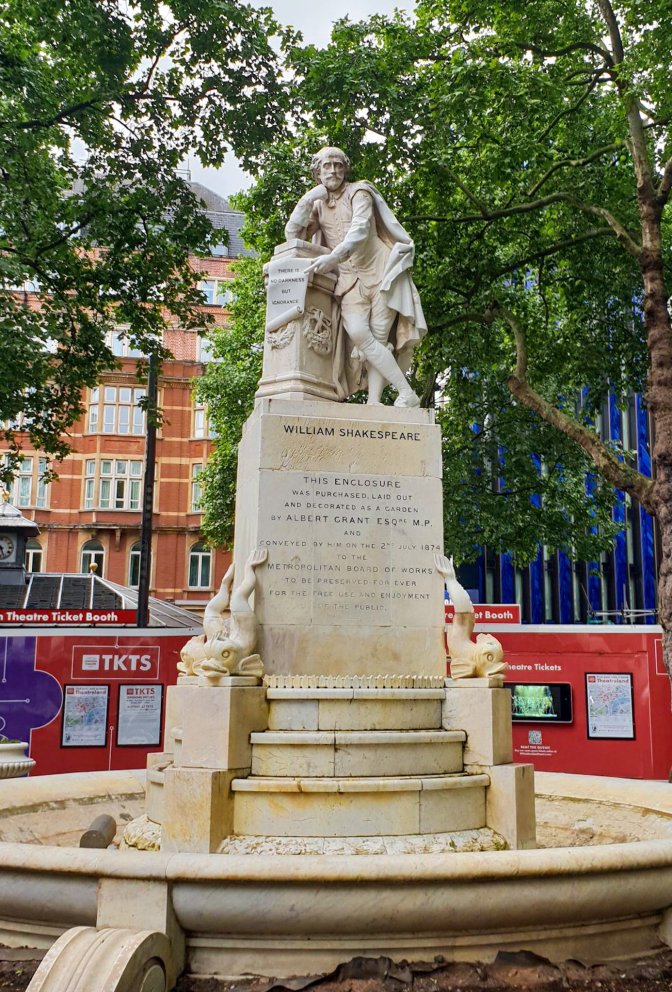
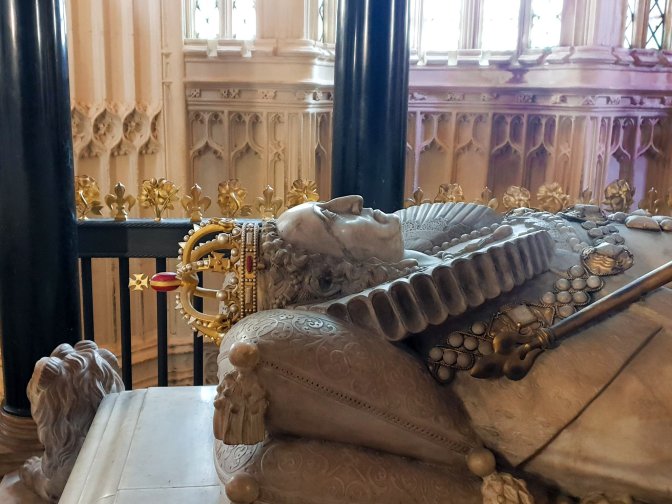

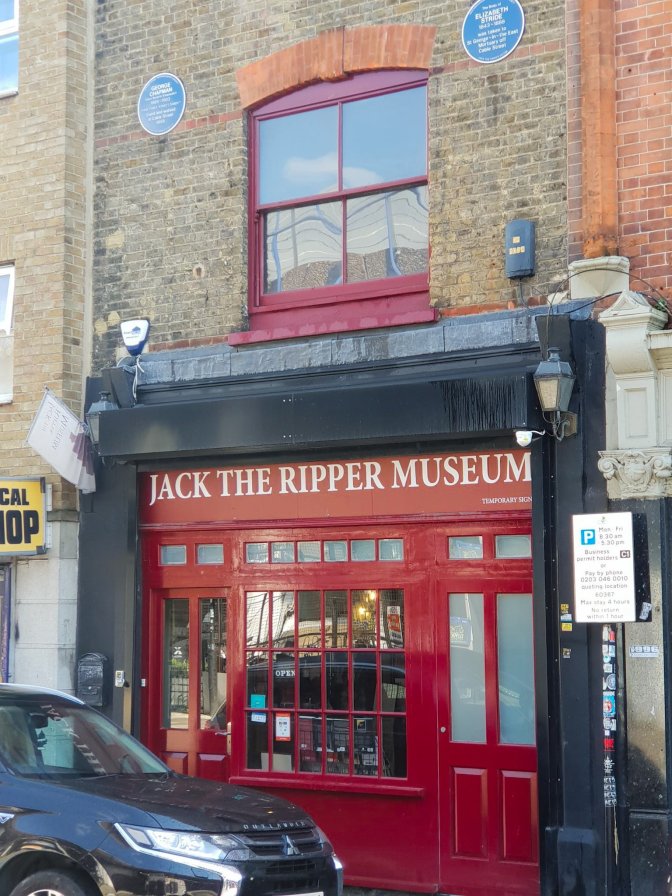
Really great post, Matthew! 🔝🔝👏👏
LikeLiked by 1 person
Thank you so much, Patricia 🙏🙏😊
LikeLiked by 1 person
Ahhhh, London. Good for what ales you. So many brews, so little time. Cheers. Allan
LikeLike
What a great post informative, n interesting 🍺🍺🍾🍽📖📒📖📖
LikeLike